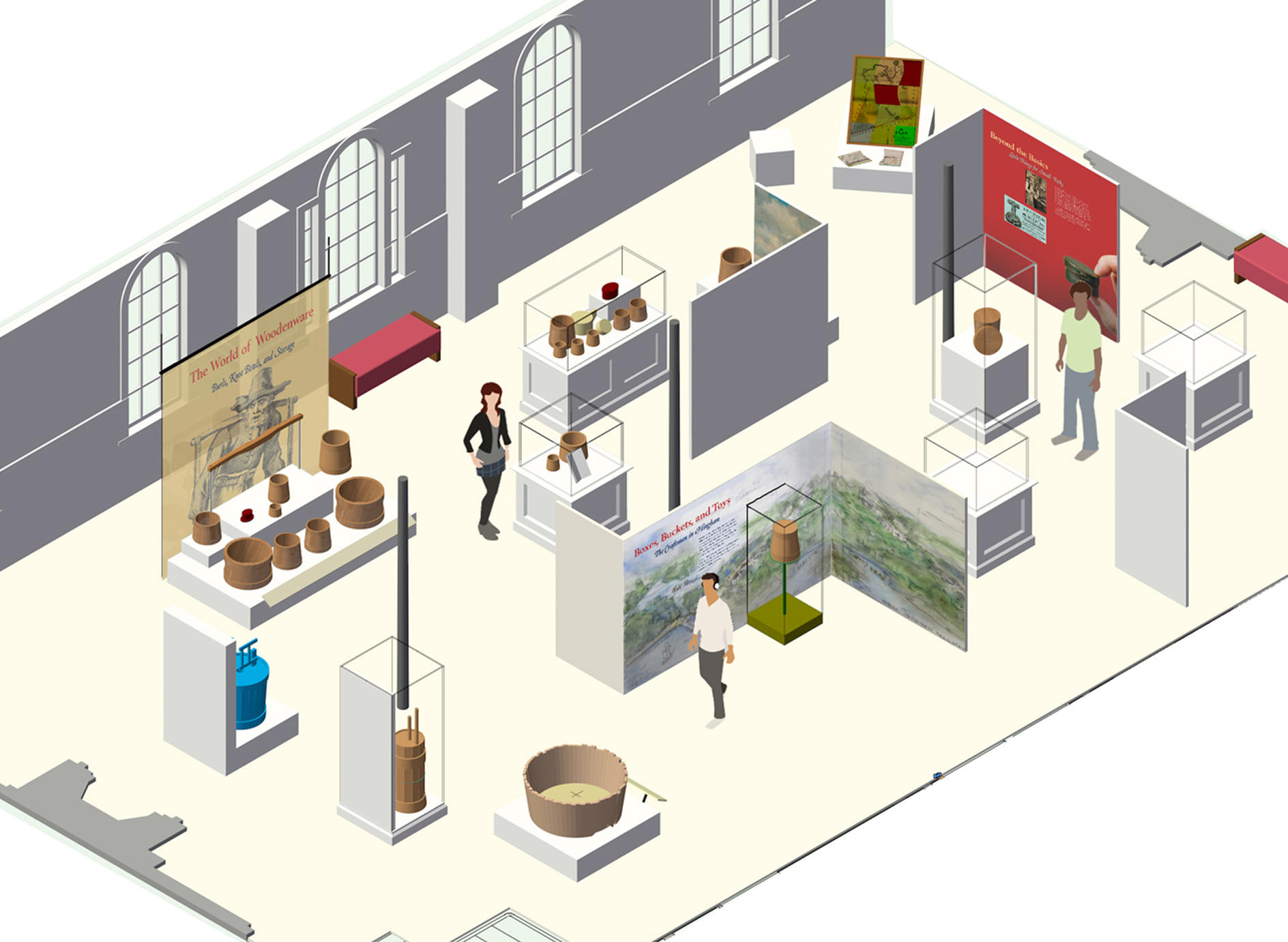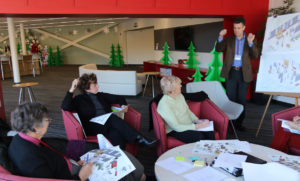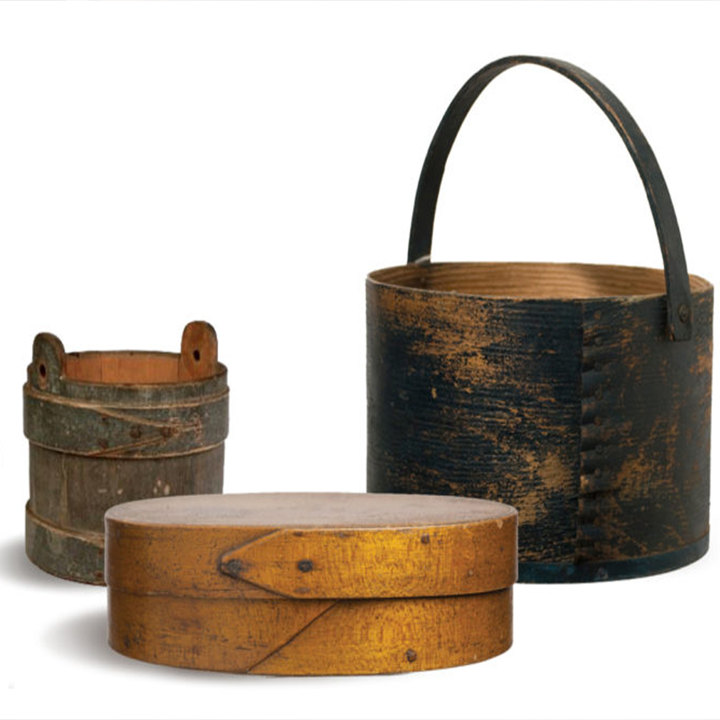Developing themes around piggins, boxes, and buckets at the new Hingham Heritage Museum
In the old colonial days, just what did you do with your leftover porridge? Or kept your beans, barley, and groats? Or laundered your clothes or cured your meat? In 1700 almost 30 coopers worked in Hingham, 245 years before Tupperware was invented. They provided for the needs of domestic storage, washing, and transport by the art of white coopering. Buckets, tubs and round boxes of all shapes and sizes were accompanied by piggins and pails as functional components of the 17th and 18th century home or shop. Many of these buckets are now prized possessions in private collections or the catalogs of fine arts auctioneers. Imagine what the residents of colonial Hingham would say to see their old buckets and churns on sale today for what their house was worth in early 18th century dollars!
Hingham’s fame is a combination of geography, market demand and a concentration of skilled coopers. Anticipating war in 1774 native son General Benjamin Lincoln as a commissary to the Colonial militia’s Committee of Supplies, he called upon his townsmen to manufacture 15,000 canteens for the local militia. This firmly established Hingham as the small box and bucket center of the new nation. Packet boats filled with boxes, buckets, and tubs made their way to Boston to be sold and then transported further up and down the coast and even to Europe in larger vessels. In the late 18th century the manufacture light woodenware became so industrialized that craftsmen like Cotton Hersey, part of the Hersey bucket-making dynasty, focused exclusively on toys and “small-ware.” For decades the Hingham craftsmen excelled in this market, William S. Tower and Co. were awarded a prize for his toys at the 1878 Exposition Universelle in Paris, but by the late 1920s few builders of fine wooden toys remained.

An overview of Boxes, Buckets, and Toys: The Craftsmen of Hingham
The Hingham Heritage Museum, scheduled to open in April, is placing their collection on display for their inaugural exhibit, Boxes Buckets and Toys: The Craftsmen of Hingham. Together with staff and volunteers at the Museum, we developed themes addressing the variety of buckets, mass production, and the transition from utilitarian woodenware to decorative buckets and miniatures. We set the stage for visitors to imagine colonial life—candlelit and surrounded by woodenware, by commissioning a mural giving visitors a birds-eye view of Hingham in the early 1800s, when the center of Hingham was a mill pond. The full breadth of the Society’s collection will be displayed, from the smallest pillbox to the innovative dumbetty, a locally invented precursor to the modern washing machine. Visitors will be able to grasp several Hingham Buckets of their own at the What type of Bucket is This interactive exhibit or assemble a layered puzzle of Hingham piecing together the links of contemporary place names with the craftsmen of Hingham’s past. The most flamboyant artifact on display is the 47,000-piece fancy bucket and tray built around 1865 by Samuel Tower. It is a centerpiece of the artifacts devoted to Hingham’s transition from wooden ware to wooden toys and miniatures.


Upper left: Edward Malouf of Content•Design presents to the staff and volunteers of the Hingham Historical Society, lower left, the sketch design for a mural showing Hingham in the early 1700s
The exhibit is located in the elegant, newly restored ballroom of the Old Derby Academy, built in 1818 for the expansion of one of the first co-educational schools in America. A new wing of the building includes a visible storage gallery and research area. Our other task was to design an exhibit furniture system that the Museum will use to create changing exhibits in the Ballroom Gallery from year to year. Plus, the exhibit needed to be demountable to accommodate private functions, especially during the wedding season. Our solution is a three-part system—exhibit walls, cases, and rolling platforms for artifacts and interactives with easily changeable vinyl graphic murals and panels. We have arranged for a representative from the company Mila-wall to set up three interlocking panels so the Museum staff can familiarize themselves with the system. When the exhibit opens this spring it will bear witness to the innovation, industry, and creativity of Hingham’s craftsmen.


